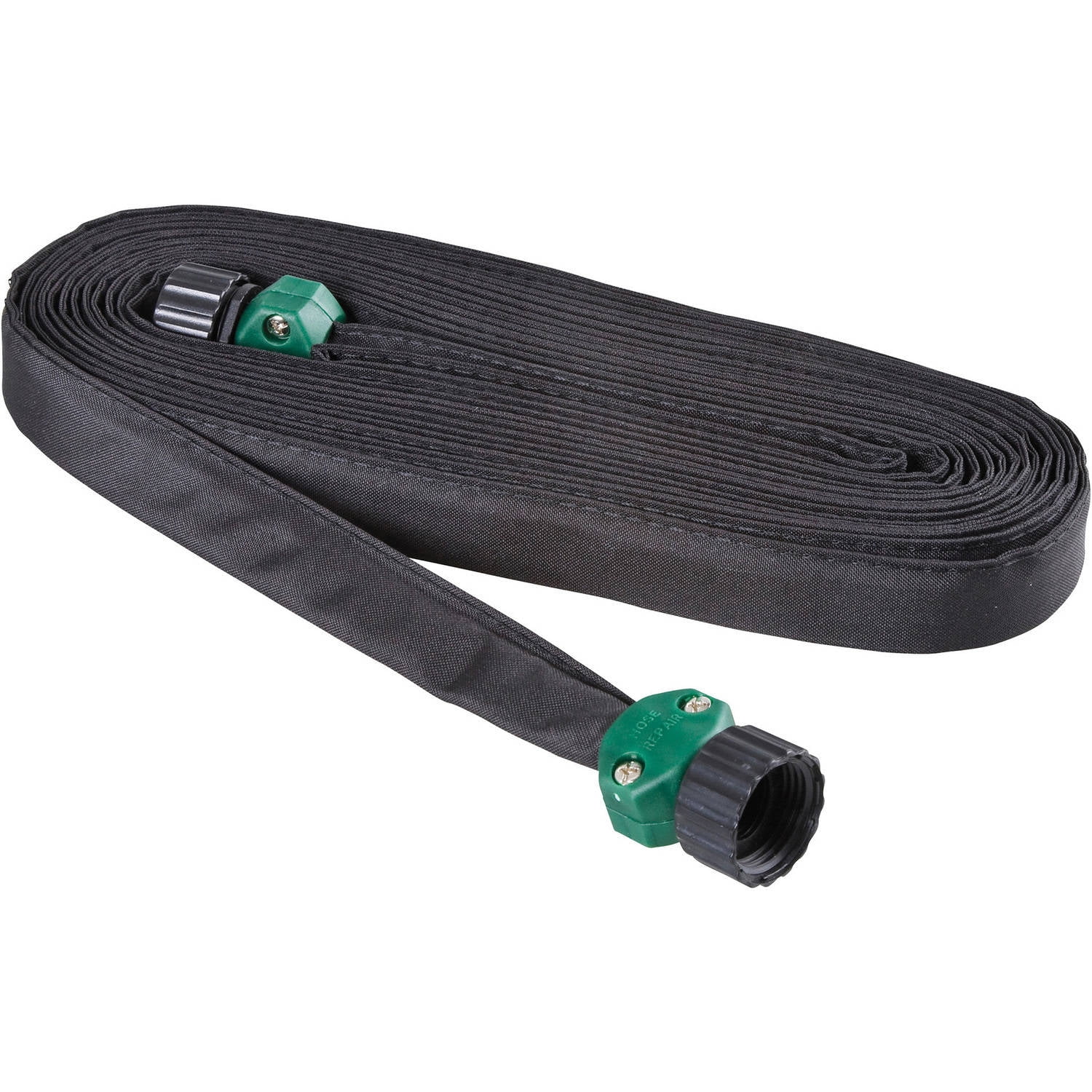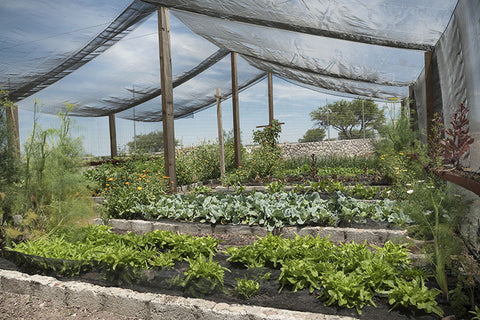The saying 'April showers brings May flowers' may be true, but the rest of the year can bring delicious garden harvests too! With the right tips and tricks, you can grow healthy food all year long, even in the heat of summer. So forget the kindergarten limericks, and start growing healthy food for you and your family!
1) More heat = more water!
Hotter temperatures result in your soil drying out significantly faster than in cooler temperatures. For gardens to be successful in the warmer months it is critical to keep the soil moist and plants sufficiently watered. For most gardens planted in warmer climates, especially in the summer, we recommend using drip irrigation or a soaker hose. These porous hoses allow water to gradually 'leak' out of the hose directly onto your garden's surface, and even saves water (and your water bill $) due to less evaporation than an aerial spray. You can arrange the hose to apply water directly to your intended plants by 'snakeing' the hose throughout your garden and winding it around the bases of your plants.


One note: even though we love and recommend drip hoses, you should still initially water your Seedsheet with a misting spray until the pods dissolve and seeds sprout. Once your plants are established and 4-6' tall you can move to a drip hose.
2) The early bird gets the... cucumber?
During the summer, the days are longer, the sun is brighter, and the temperature is hotter. Another way to prevent soil dryness and thirsty plants is to make sure you are watering your gardens during the mornings and evenings. This simple trick will help get moisture to your plants before the sun rises and and starts drying out your soil.
Consider adding a watering timer to your drip irrigation setup to automatically water your garden during the mornings and/or evenings. So instead of spending time adding water to your plants, maybe you add some champaign to your orange juice...?

3) SPF 1,000 Please
You use sunscreen in the summer, your plants can too! While sunlight enables plants to photosynthesize and grow, too much sun can cause problems like plant-burn and dry soil. Without proper protection, you will be the only one looking like a tomato! If you live in an area that gets many consecutive days over 100F degrees, we strongly recommend using a gardening shade cloth. These fabric sheets allow a certain amount of light through, so your plants can continue to photosynthesize, but not dry out.
The shade cloth consists of woven fibers, like netting, that has gaps between the fibers to let sunlight through. There are several shade clothes on the market, with numbers like 30%, 40%, and 50%, which relate to the spacing of the fibers and the percentage of sunlight that they allow through -- think of it like SPF50, 75, 100...
Depending on your garden's size you may choose to place a tunnel over your garden (like this awesome Seedsheet customer), or like the photo below, cover an entire backyard space with the cloth. In addition to partially blocking the sun to prevent moisture evaporation, shade cloth also will help lower the temperature of the protected area by 10-15 degrees!

4) Give your plants a haircut!
For some plants, warmer weather can cause them to 'bolt' or go to seed early. This means that the plant senses its imminent death, so it directs its effort into producing seeds so that its progeny can live on -- pretty amazing, right!? While we applaud the survivor instinct, you can prevent this from happening by harvesting or trimming your plants as they start to develop flowers and seeds. When plants begin to bolt their taste profile starts to get spicier and mustardy, so take a pair of scissors and cut off the top parts of the plants to promote additional plant growth instead of flower and seed development. As a bonus, frequent harvesting also results in frequent harvests (yay, food)!

5) Some like it hot
There are many plant varieties that thrive in warmer temperatures, and are a great bet for summer plantings. Here are a few of our favorite heat-tolerant plants:
- Peppers
- Green Beans
- Zucchini
- Sunflowers
- Eggplant
- Cucumbers
- Cantaloupe
- Pumpkin
- Squash
- Corn
- Peas
So April showers bring May flowers, but the rest of the year will make your garden cheer!
Okay, maybe we won't win a slam poetry contest anytime soon, but we're gardeners, not poets... This article is intended to educate you that there are many seasons where you can start a garden, and there are tools, tips, and products that will help you grow delicious healthy gardens all year long!
We look forward to embarking on this gardening journey with you, and are here to answer your gardening questions, and help you enjoy as many homegrown harvests as possible!
Design your next Custom Seedsheet


Leave a Comment